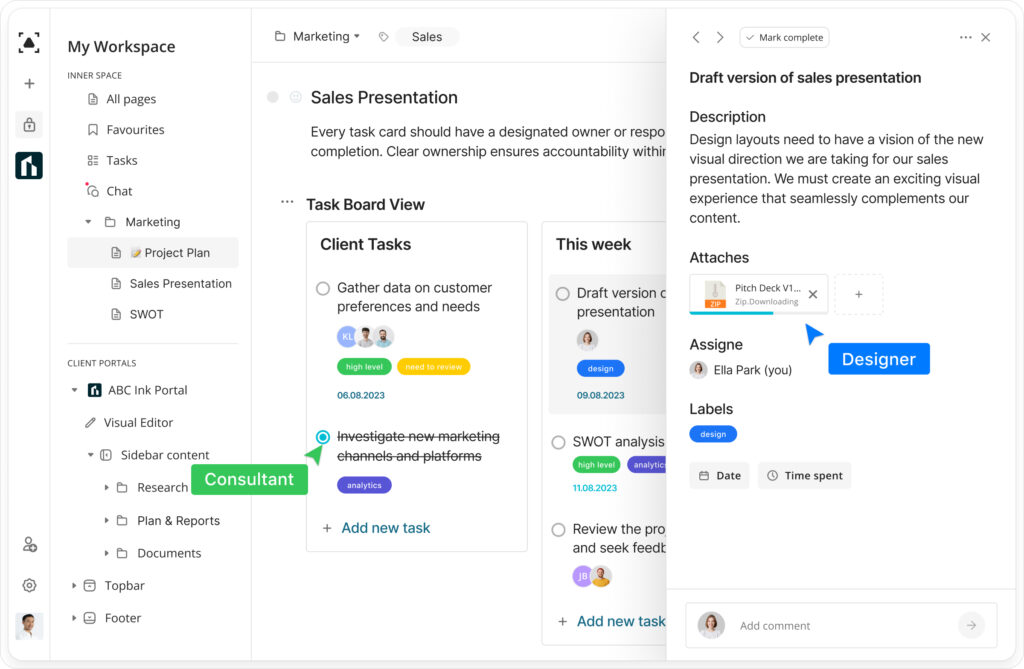- Feb 13, 2024
- 7 Min
What are Cross-Functional Teams: the Ultimate Guide for Digital Projects

Select team management strategy that work best for your project
Book a demoThe traditional approach to corporate processes (people working inside particular departments) is becoming more and more inflexible. It limits the organization in various aspects: ideation, diversity of projects, and affects the overall effectiveness of most business processes.
That’s when cross-functional teams come to help. According to Deloitte’s report, 83% of the surveyed companies are implementing this approach to team formation and gathering teams consisting of people from various departments. Ensuring more diversity helps many companies increase resilience and accelerate business growth and product development.
So, if you’ve ever wondered how you can improve the creativity and efficiency of project competition inside your company, this article is for you! Here, we’ll tell you more about how cross-functional teams operate, their main advantages and pitfalls and how to make them work right away.
Keep reading — we hope you’ll find some helpful insights here!
What are Cross-Functional Teams?
A cross-functional team consists of specialists from different fields. This means you’re working with people from various departments: finance, development, sales, design and so on. The teams are usually middle-sized and consist of around 10-15 team members.
Here’s what the core of a cross-functional team looks like if you’re working on digital products — for example, web application development:
- 1 Product Owner
- 1 Scrum Master
- 1 Tech Lead
- 1 UX
- 2-4 Frontend and Backend Developers
- 1-2 Testers
- 1 DevOps specialist
Here, you can also include UI designers, marketing specialists, sales managers, content writers and so on — depending on the project, its concept and the key goals.
One of the key points to consider while forming cross-functional teams is ensuring equal involvement of all the group members. No clear hierarchy here — so it’s vital to treat each other equally. Even if you’re having people with less experience, it’s worth ensuring the most comfortable conditions and onboarding for everyone.
You’ll pick a group leader. It doesn’t mean they’ll be more important than the rest of the team. The key to establishing efficient cross-functional groups is ensuring complete equality among everyone. The group leader is responsible for making this happen. Thus, such teams become more efficient, well-connected and friendlier.
Key benefits of cross-functional teams
Working in a cross-functional team is a great opportunity to grow and develop, both on an individual and organizational level. So let’s have a look at some of the key benefits of organizing cross-functional teams:
- Increase innovation — working with people from different departments and levels of expertise encourages ideation and makes each team member think from different viewpoints and expert angles. This helps a lot during brainstorming, developing new products and creating additional value for your current or future products;
- Increase efficiency — you can quickly address various issues to people from your team, whether technical, organizational, content- or design-related. Such teams increase the problem-solving effectiveness and hence, the overall success of project completion;
- Shape the common vision — whether you’re from the tech, design or sales department, working in a cross-functional team can help your colleagues develop a more unified vision of what you’re about to create and a better understanding of the company’s goals and values;
- Boost teammates’ autonomy — when it comes to accomplishing particular goals, most companies that stick to cross-functional team formation admit better opportunities to operate independently and make decisions tailored to the company’s objective;
- Promote diversity — you can gather different experts in one team, making managing and allocating tasks easier. You know each member’s main strengths and powers, so giving responsibilities won’t be a problem.
Pitfalls of setting up a cross-functional team
Of course, setting up cross-functional teams has its drawbacks. Some of the main ones include:
- Poor leadership is one of the essential aspects that worsen the efficiency of cross-functional teams. It leads to flawed communication and understanding of the key tasks and goals among the team members;
- Lack of shared vision — since you’re working with people from different departments, they may have different expectations and ideas regarding each task. It may lead to conflicts of interest and slow down project completion. Finding a compromise might be a real challenge when working in a cross-functional environment.
nimbus_read_more
Tips on Creating an Effective Cross-Functional Team
Once you’ve gathered a dream team, you need to make this work. To help you out, we’ve gathered some of the most valuable tips for increasing the efficiency of your cross-functional team.
Set a common goal
Sure, each team member has their own tasks and KPIs. However, everyone needs to share a common vision and have the same end goal while working on a particular project. If you want to ensure all your colleagues are working with the same vision, arrange a meeting with them and discuss what you’re expecting from this collaboration. Let your team members ask questions and make suggestions. Then, review ideas and set clear goals once in a while to stay on the same page.
Select a robust and influential leader
Working in an environment with specialists from different organizational departments requires a lot of resilience and endurance simultaneously. You’ll need to get used to how each of your team members works and how fast they can deliver a task or reply to a message, for example. If you don’t want to get lost trying to find a unified approach for everyone, become an influential leader of your team.
To make it work, ensure regular quality checks and guiding discussions to detect and quickly handle issues. Try allocating responsibilities and ensure you manage this project as a whole, not piece by piece.
Define the most convenient work format
If you have enough authority, set up a comfortable work format that would fit everyone. For example, you can choose between the office and remote collaboration and set relevant terms in each case. Check whether everyone is satisfied with how and where you work and provide the necessary tools for progress tracking, communication and sharing feedback.
Select a unified technology stack to work comfortably
Don’t make your in-group communication too cluttered: get rid of unnecessary messengers, set up a suitable tool to share all the tasks and project updates, stay in touch with your colleagues and see where you’re at.
The best solution is to pick one internal communication system everyone’s familiar with and comfortable working there. This will resolve plenty of potential challenges like arranging meetings or brainstorming, especially if you’re working from home.
Increasing Your Team’s Efficiency with FuseBase

To make sure your cross-functional team seamlessly collaborates on any task, try FuseBase. This is a perfect project management tool that helps maintain proper communication and increase the involvement of all the team members. Plus, it’s also great for individual usage in case you need to draft some notes, plan the day or create mind maps.
Write notes, set tasks, and communicate with your team: all in one place with FuseBase
How does FuseBase help you exactly? We’ve gathered some of the top features that will help you:
- Super Documents — with super documents, you can save everything you need for a specific project: store all kinds of data from charts to video files and share them with your teammates;
- Video and audio recordings — they’re embedded into FuseBase pages and help you and your colleagues share feedback or viewpoints and present new concepts most conveniently;
- Comments — they allow you to emphasize the key points, explain any unclear points and add extra context to your current or upcoming tasks;
- Shared pages — manage data access to colleagues from both your department or a cross-functional team.
With FuseBase, you can easily manage ongoing tasks, track progress and share comments or feedback in any convenient format. In addition, it’s an excellent replacement for countless messengers and meeting systems as it allows you to record videos and send audio messages inside the tool. Plus, with such diverse features, you can customize your workplace and make it 100% convenient for everyone.
Try FuseBase for free and enjoy working with your team!